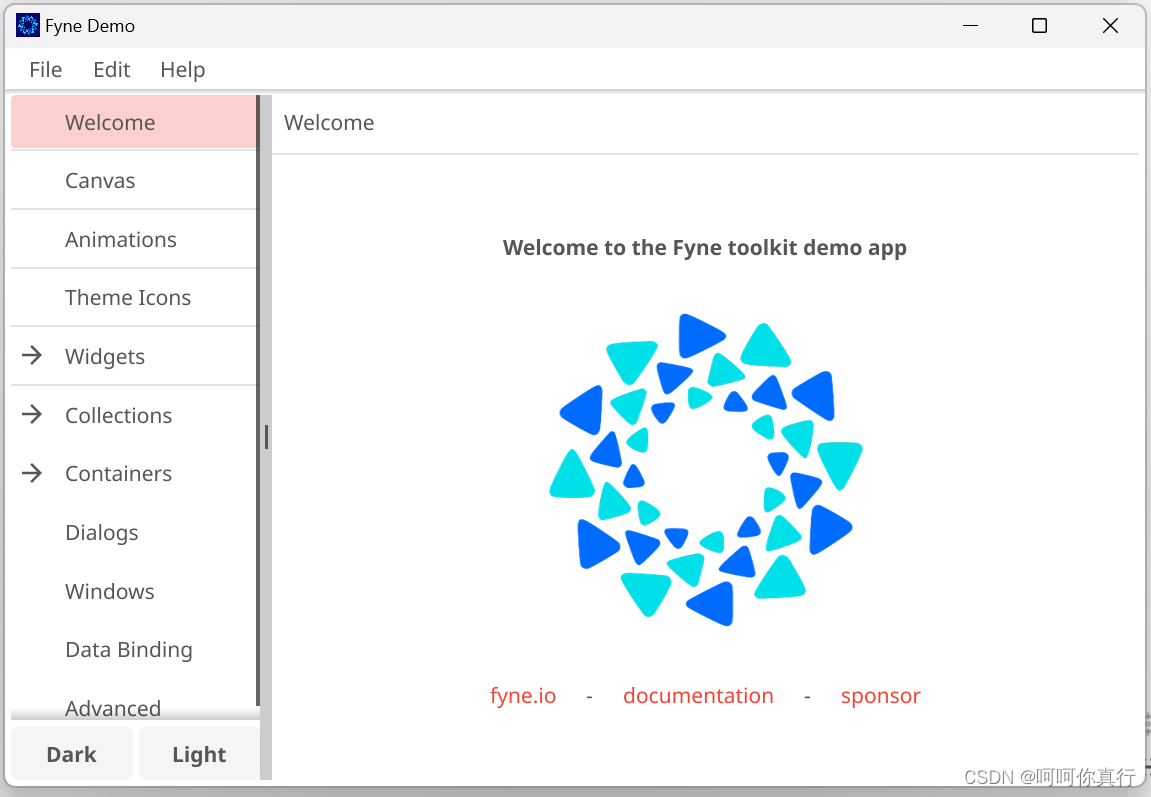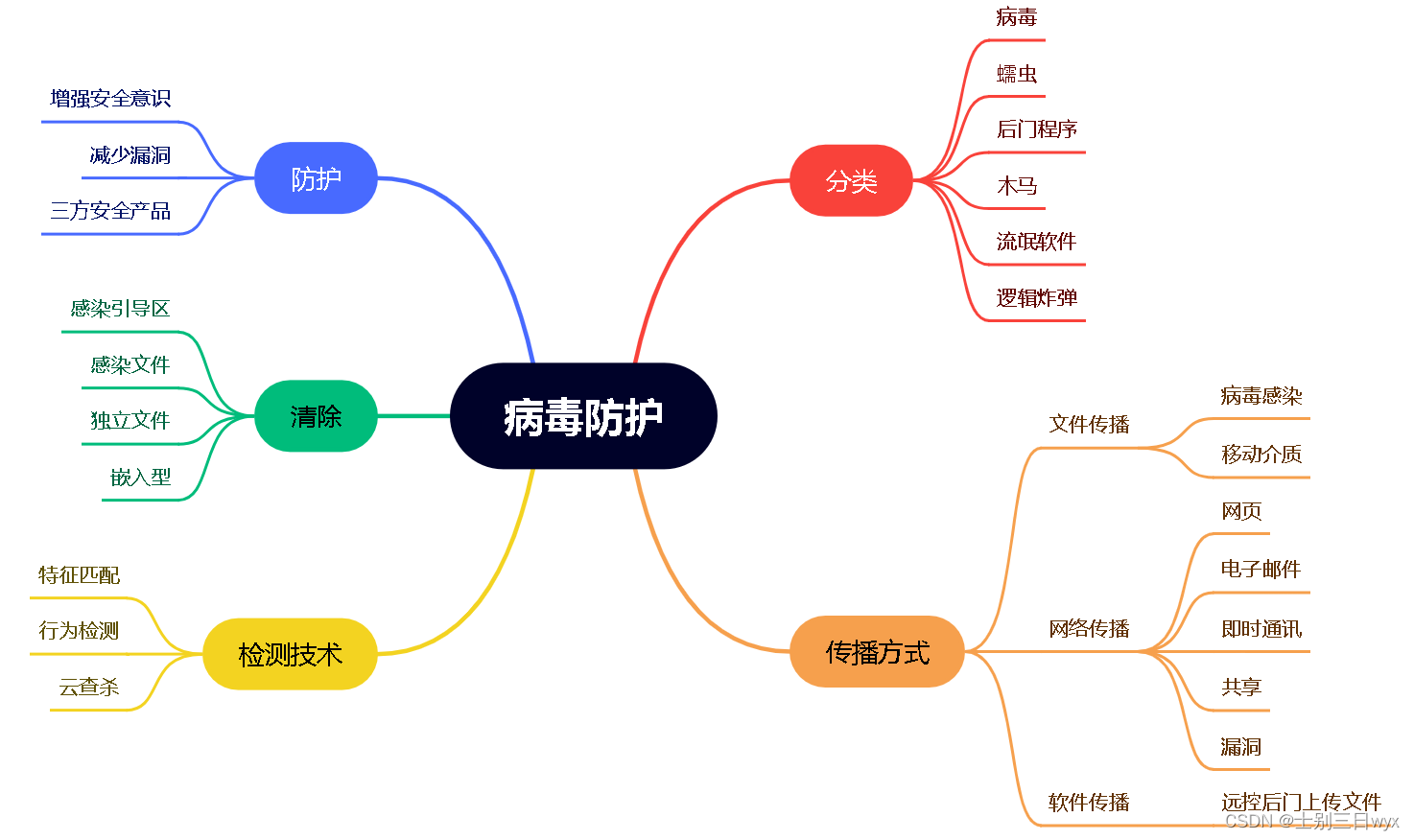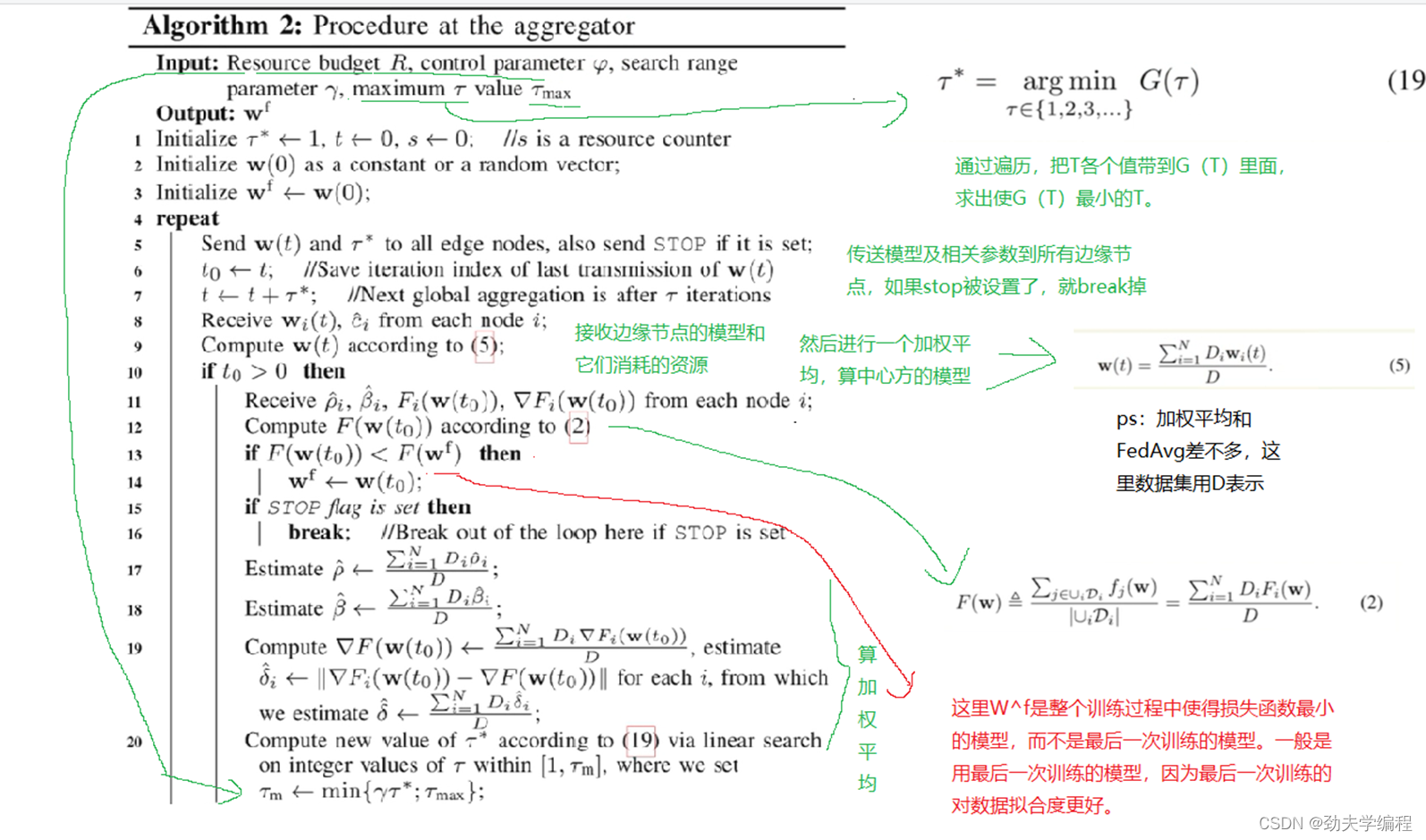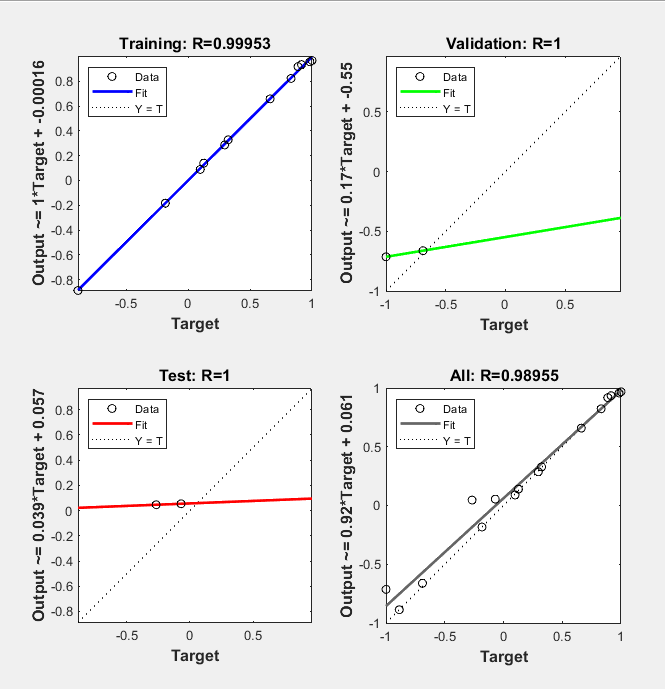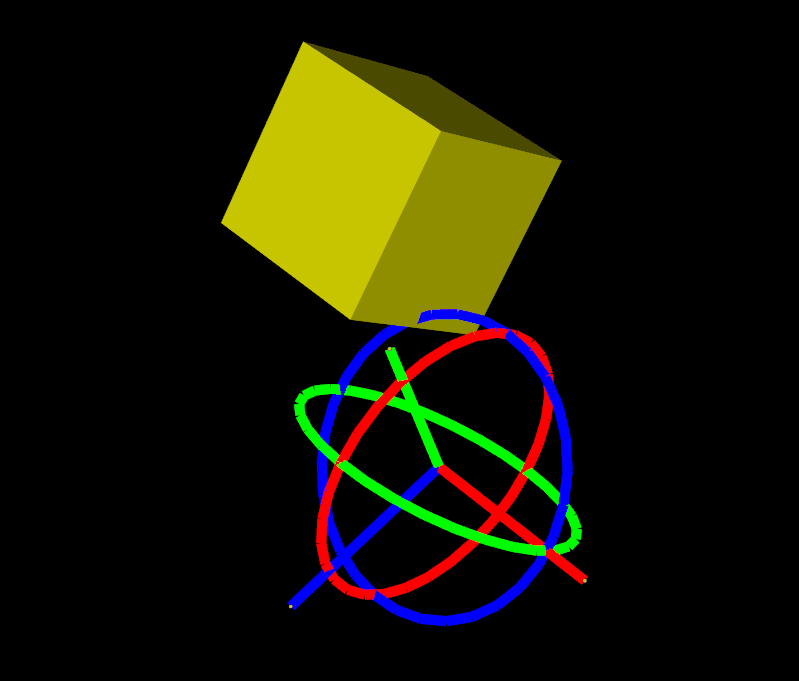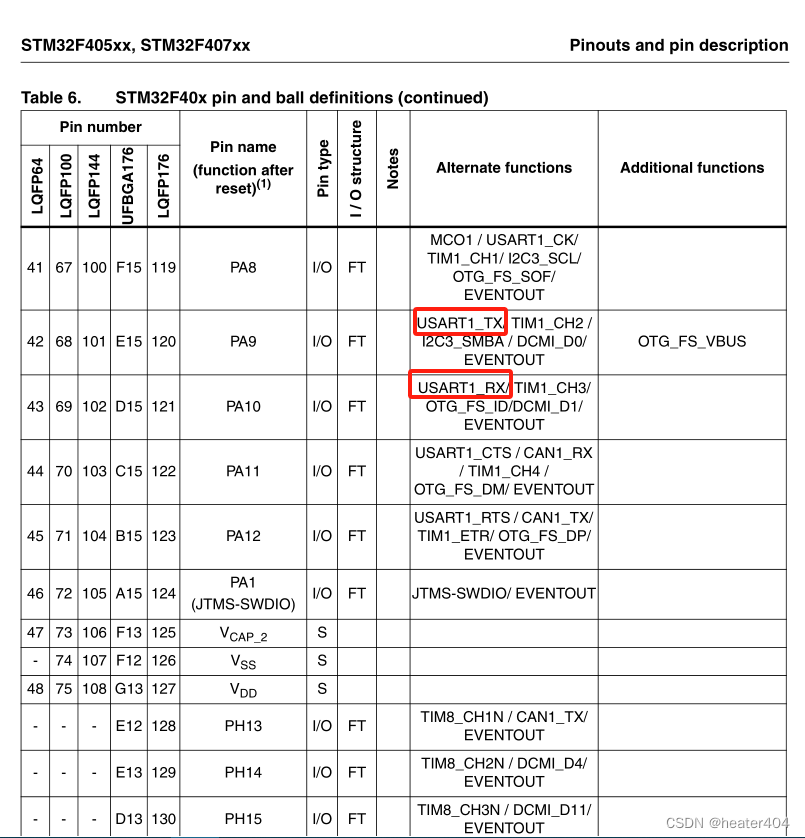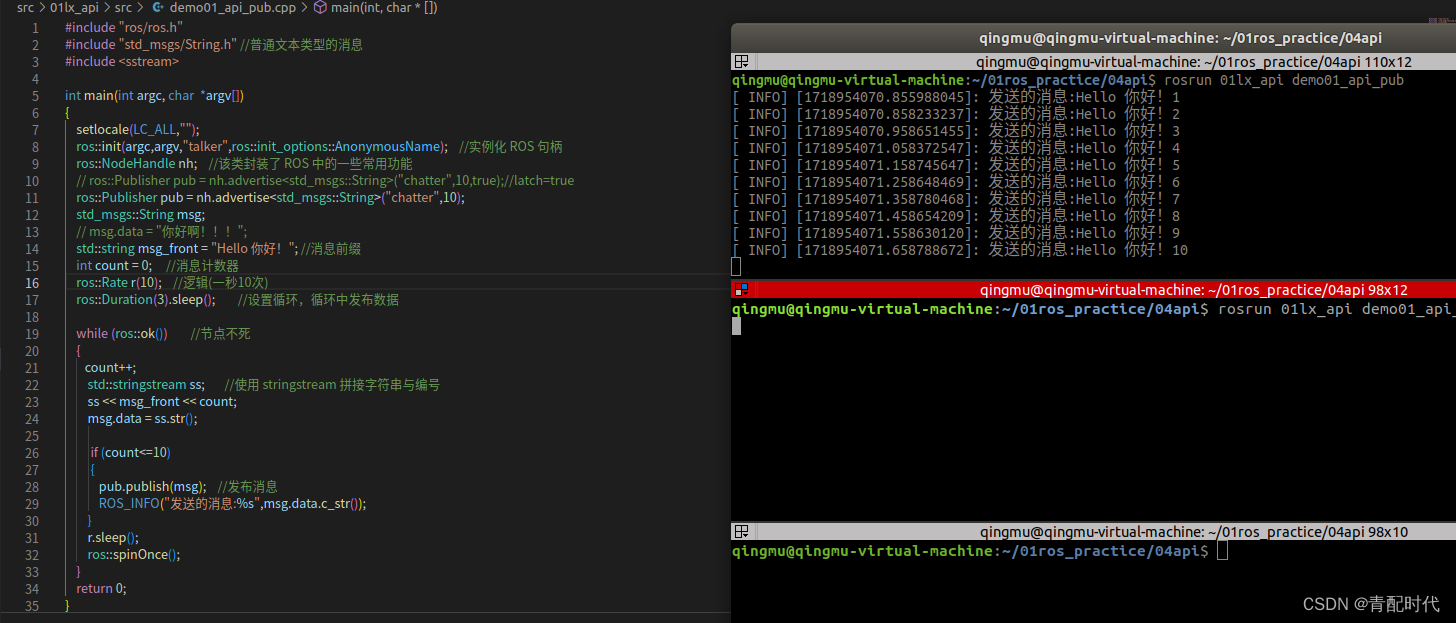目录
- 💡前言
- 一,优先级队列的使用
- 二,仿函数
- 1,什么是仿函数
- 2,仿函数的简单示例
- 三,优先级队列的底层剖析
💡前言
优先队列(priority_queue)是一种容器适配器,默认使用vector作为其底层存储数据的容器,在vector上又使用了堆算法将vector中元素构造成堆的结构,因此priority_queue就是堆,所有需要用到堆的位置,都可以考虑使用priority_queue。注意:默认情况下priority_queue是大堆。
注意:使用优先级队列要包含头文件 < queue >。
一,优先级队列的使用
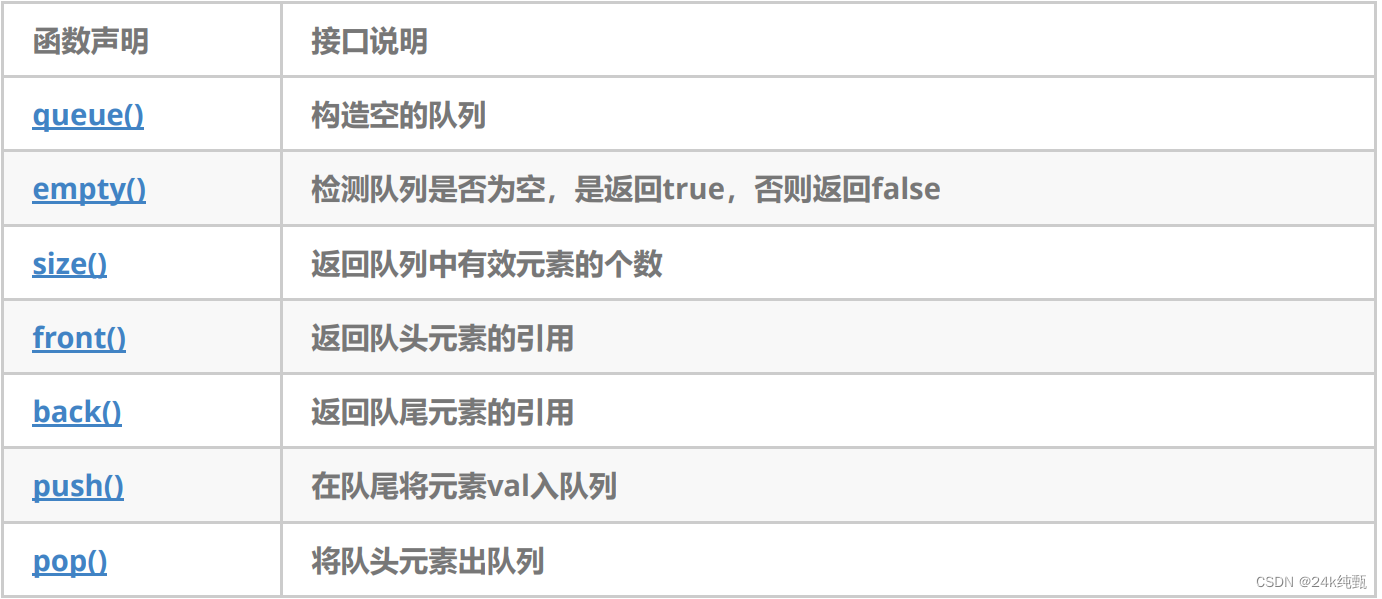
代码实现如下:
这里的建堆一般有两种方式:
(1) 一种是一个一个push进vector容器再进行向上调整建堆
(2) 另一种是直接用迭代器区间构造直接建堆(推荐用这种)。
#include <iostream>
#include <queue>
#include <functional>
using namespace std;
void test_priority_queue()
{
vector<int> v = { 6,0,3,5,4,7,9,1,2,8 };
//默认升序
//priority_queue<int> pq(v.begin(), v.end());
//一个一个尾插建堆
priority_queue<int, vector<int>, greater<int>> pq;
for (auto e : v)
{
pq.push(e);
}
//迭代器区间构造,直接建堆
//priority_queue<int,vector<int>,greater<int>> pq(v.begin(), v.end());
while (!pq.empty())
{
cout << pq.top() << " ";
pq.pop();
}
cout << endl;
}
int main()
{
test_priority_queue();
return 0;
}
注意:优先级队列默认的大堆,降序排列,如果要升序,就要换仿函数。下图中第三个模板参数就是传仿函数。
使用算法库里的 less 和 greater 算法,需要包含头文件< functional >

二,仿函数
1,什么是仿函数
仿函数也叫函数对象,是一个重载了 operator() 的类,可以使得类的对象像函数一样使用。
2,仿函数的简单示例
operator()并没有参数的个数和返回值,所以使用是十分灵活的。
struct Func1
{
//无参无返回值
void operator()()
{
cout << "Func调用" << endl;
}
};
struct Func2
{
//有参无返回值
void operator()(int n)
{
while (n--)
{
cout << "Func调用" << endl;
}
}
};
int main()
{
Func1 f1;
f1(); //使得对象像函数一样使用
f1.operator()(); //显示调用
cout << endl;
Func2 f2;
f2(3); //使得对象像函数一样使用
return 0;
}
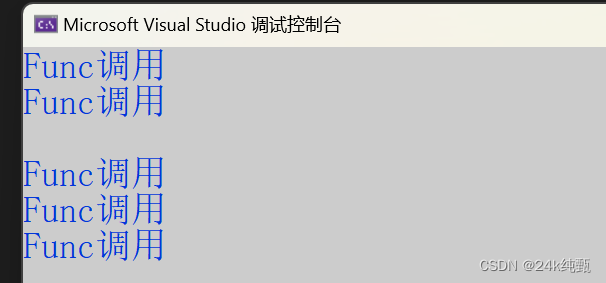
三,优先级队列的底层剖析
namespace ling
{
template<class T>
class myless
{
public:
bool operator()(const T& x, const T& y)
{
return x < y;
}
};
template<class T>
class mygreater
{
public:
bool operator()(const T& x, const T& y)
{
return x > y;
}
};
template <class T, class Container = vector<T>, class Compare = myless<T>>
class priority_queue
{
public:
priority_queue() = default;
//迭代器区间构造
template <class InputIterator>
priority_queue(InputIterator first, InputIterator last)
{
while (first != last)
{
con.push_back(*first);
++first;
}
//建堆
for (int i = (con.size() - 1 - 1) / 2; i >= 0; i--)
{
Adjust_down(i);
}
}
bool empty() const
{
return con.empty();
}
size_t size() const
{
return con.size();
}
// 堆顶元素不允许修改,因为:堆顶元素修改可以会破坏堆的特性
const T& top()const
{
return con[0];
}
//向上调整
void Adjust_up(int child)
{
int parent = (child - 1) / 2;
while (child > 0)
{
//if (con[parent] < con[child])
if(comp(con[parent], con[child]))
{
swap(con[parent], con[child]);
child = parent;
parent = (child - 1) / 2;
}
else
{
break;
}
}
}
void push(const T& x)
{
con.push_back(x);
Adjust_up(con.size() - 1);
}
//向下调整
void Adjust_down(int parent)
{
int child = parent * 2 + 1;
while (child < con.size())
{
if (child + 1 < con.size() && comp(con[child], con[child + 1]))
{
child += 1;
}
//if (con[parent] < con[child])
if(comp(con[parent], con[child]))
{
swap(con[parent], con[child]);
parent = child;
child = parent * 2 + 1;
}
else
{
break;
}
}
}
void pop()
{
swap(con[0], con[con.size() - 1]);
con.pop_back();
Adjust_down(0);
}
private:
Container con;
Compare comp;
};
}
测试代码:
void TestQueuePriority()
{
ling::priority_queue<int> q1;
q1.push(5);
q1.push(1);
q1.push(4);
q1.push(2);
q1.push(3);
q1.push(6);
cout << q1.top() << endl;
q1.pop();
q1.pop();
cout << q1.top() << endl;
vector<int> v{ 5,1,4,2,3,6 };
ling::priority_queue<int, vector<int>, ling::greater<int>> q2(v.begin(), v.end());
cout << q2.top() << endl;
q2.pop();
q2.pop();
cout << q2.top() << endl;
}


